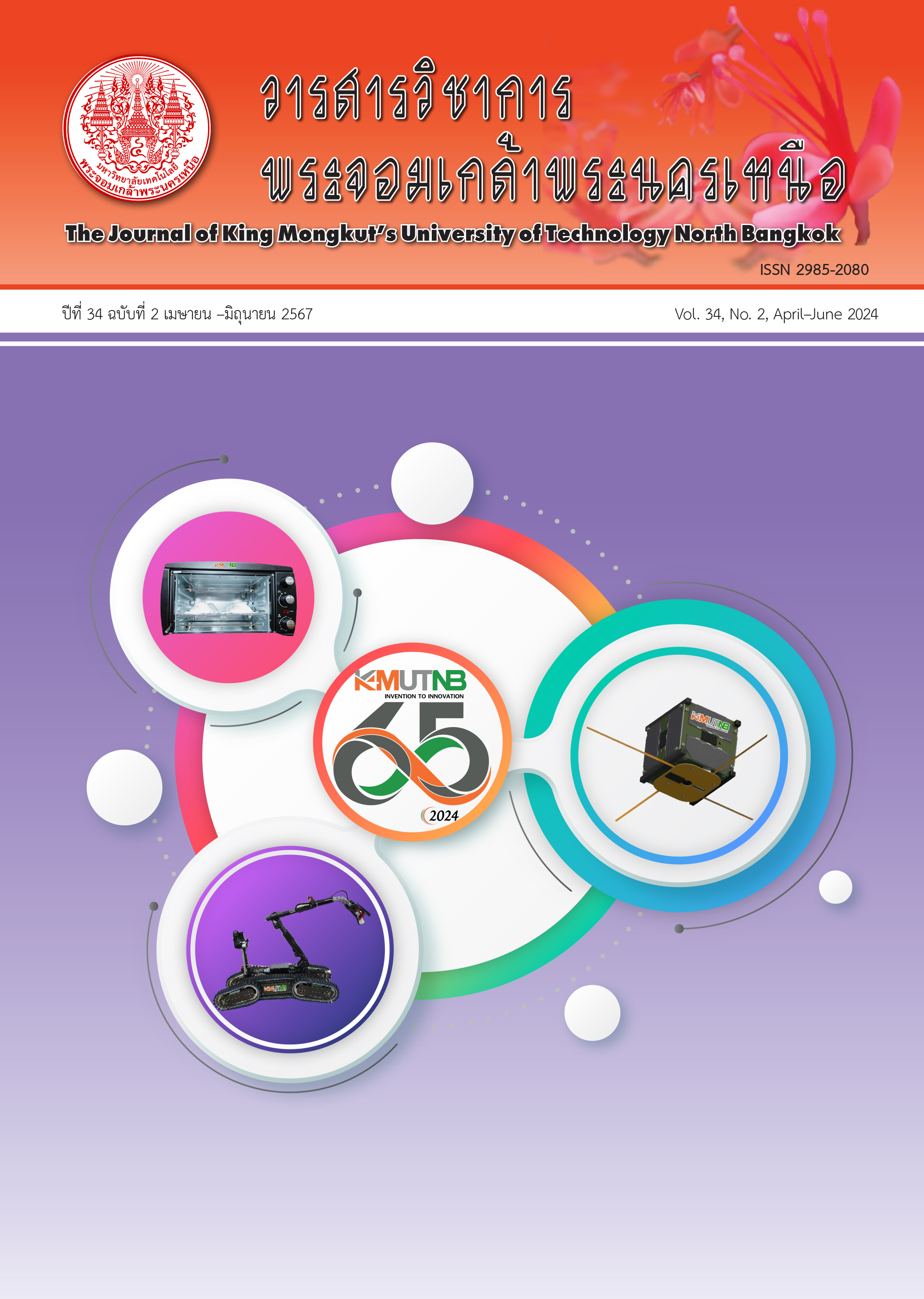Circular–circular Regression Model, with Application to Meteorological Data
Main Article Content
Abstract
The purpose of this paper is to investigate the four–parameter circular regression model of Taylor in which the angular error is distributed as a wrapped Cauchy distribution. The study is also extended to a polynomial circular model, including parameter estimation using a method of maximum likelihood. The estimations of regression parameters are examined through simulations. In addition, an application of the model considered here is illustrated using a real dataset of wind directions measured at a weather station in Texas and its fit is compared with some existing regression models. The results of the simulation show that the proposed parameter estimations perform favorably since the biases of estimators are close to zero and root mean square errors of estimators are small. Furthermore, the findings from this real application show that the circular–circular regression model of Taylor in which the angular error is distributed as a wrapped Cauchy distribution represents the relationship between the wind directions reasonably well.
Article Details

This work is licensed under a Creative Commons Attribution-NonCommercial-NoDerivatives 4.0 International License.
The articles published are the opinion of the author only. The author is responsible for any legal consequences. That may arise from that article.
References
O. Polsen and C. C. Taylor, “Parametric circular– circular regression and diagnostic analysis,” Geometry Driven Statistics, 1st ed., London: John Wiley & Son, pp. 115–128, 2015.
S. Kato, K. Shimizu, and G. S. Shieh, “A circular– circular regression model,” Statistica Sinica, vol. 18, pp. 633–645, 2008.
S. Kato and M. C. Jones, “A family of distributions on the circle with links to, and applications arising from, Möbius transformation,” Journal of the American Statistical Association, vol. 102, pp. 249–262, 2010.
U. J. Lund, “Least circular distance regression for directional data,” Journal of Applied Statistics, vol. 26, pp. 723–733, 1999.
T. Down, “Rotation angular correlation,” in Biorhythms and Human Reproductioni, Ed. M. Ferin, F. Halberg and L. van der Wiele, New York: John Wiley & Son, 1974.
L. P. Rivest, “A decentred predictor for circular–circular regression,” Biometrika, vol. 84, pp. 717–726, 1977.
S. R. Jammalamadaka and Y. R. Sarma, “Circular regression,” in Proceedings of the Third Pacific Area Statistical Conference, pp. 109–128, 1993.
T. D. Downs and K. V. Mardia, “Circular regression,” Biometrika, vol. 89, pp. 683–697, 2002.
C. C. Taylor, “Directional data on the torus, with application to protein structure,” in Proceedings of the SIS 2009 Statistical Conference on Statistical Methods for the Analysis of Large Data–Sets, pp. 105–108, 2009.
K. V. Mardia, Statistics of Directional Data, New York: Academic Press, 1972.
P. McCullagh, “Möbius transformation and Cauchy parameter estimation,” The Annals of Statistics, vol. 24, pp. 787–808, 1996.
J. T. Kent and D. E. Tyler, “Maximum likelihood estimation for the wrapped Cauchy distribution,” Journal of Applied Statistics, vol. 15, pp. 247–254, 1988.
M. C. Jones and A. Pewsey, “A family of symmetric distributions on the circle,” Journal of the American Statistical Association, vol. 100, pp. 1422–1428, 2005.
S. Kato and M. C. Jones, “An extended family of circular distributions related to wrapped Cauchy distributions via Brownian motion,” Bernoulli, vol. 19, pp. 154–171, 2013.
S. Kato and M. C. Jones, “A tractable and interpretable four–parameter family of unimodal distributions on the circle,” Biometrika, vol. 102, pp. 181–190, 2015.
S. Kato and A. Pewsey, “A Möbius transformation– induced distribution on the torus,” Biometrika, vol. 102, pp. 359–370, 2015.
R Core Team. (2016). R: A Language and Environment for Statistical Computing. R Foundation for Statistical Computing, Vienna, Austria, [Online]. Available: http://www.R-project.org

